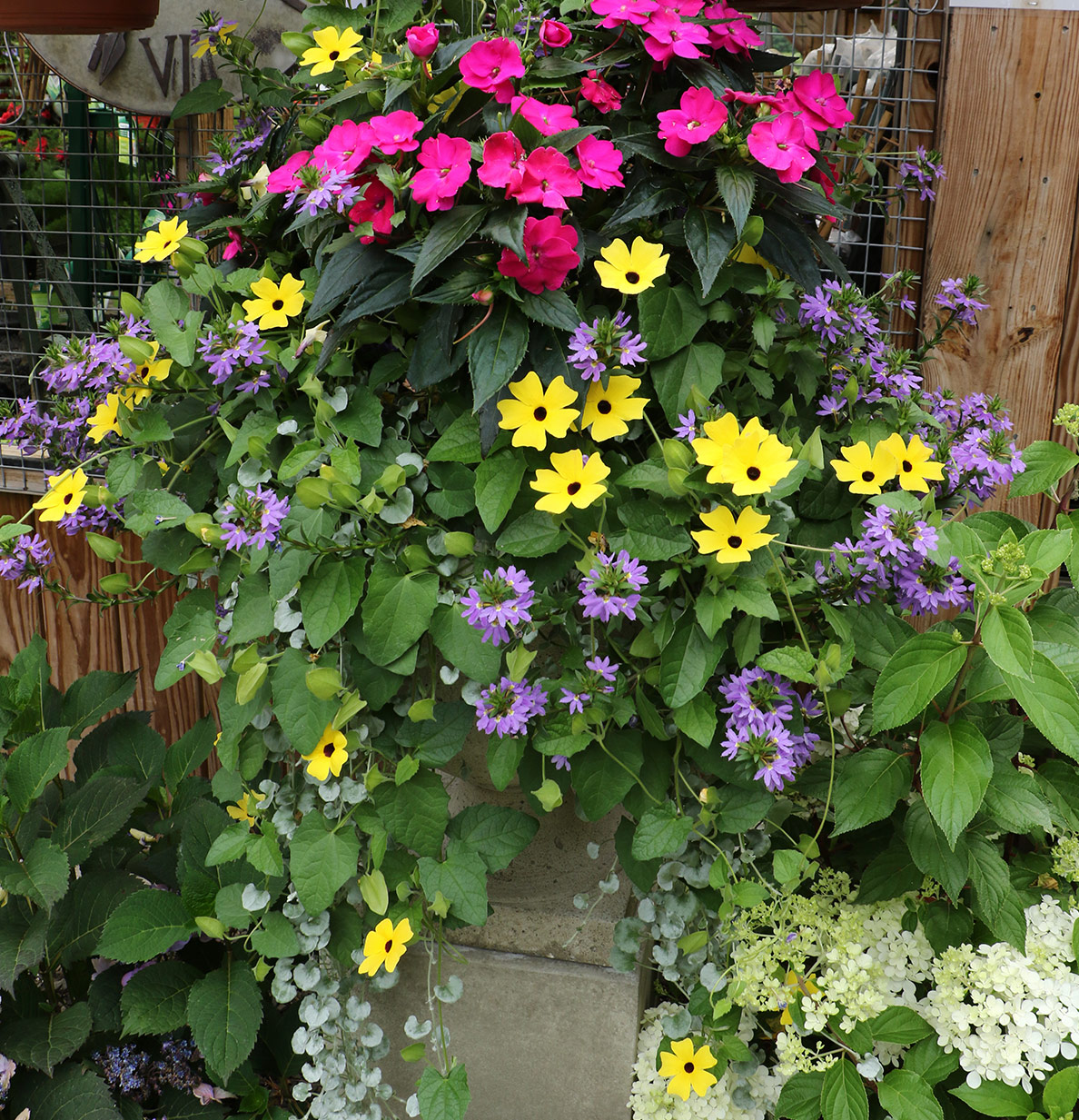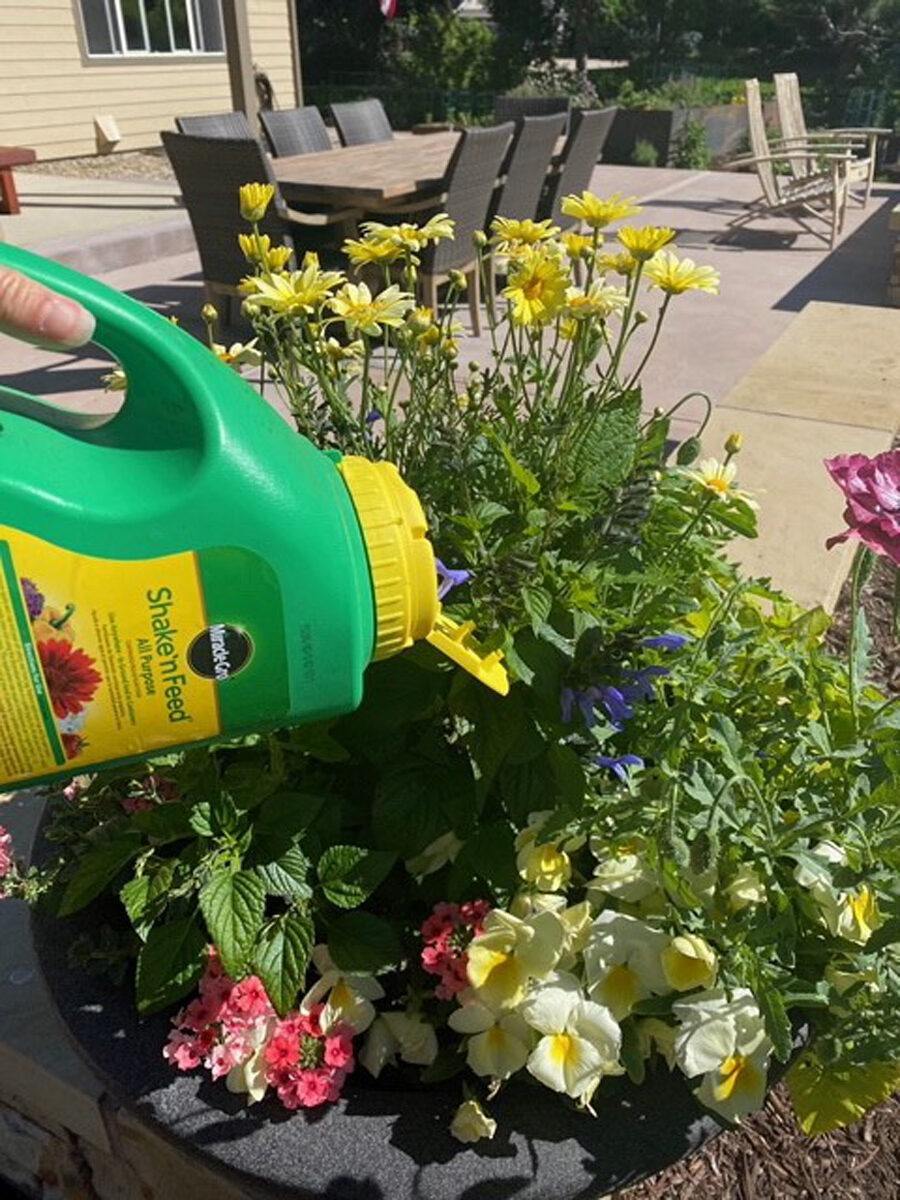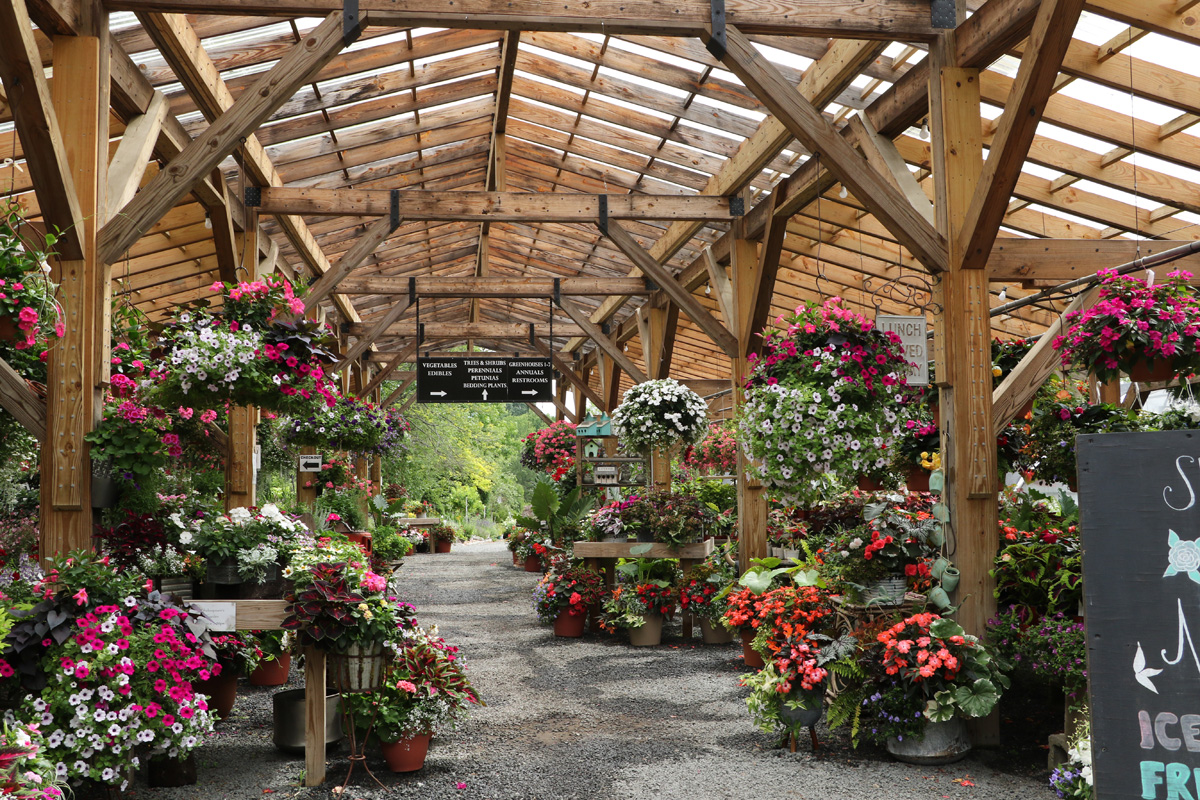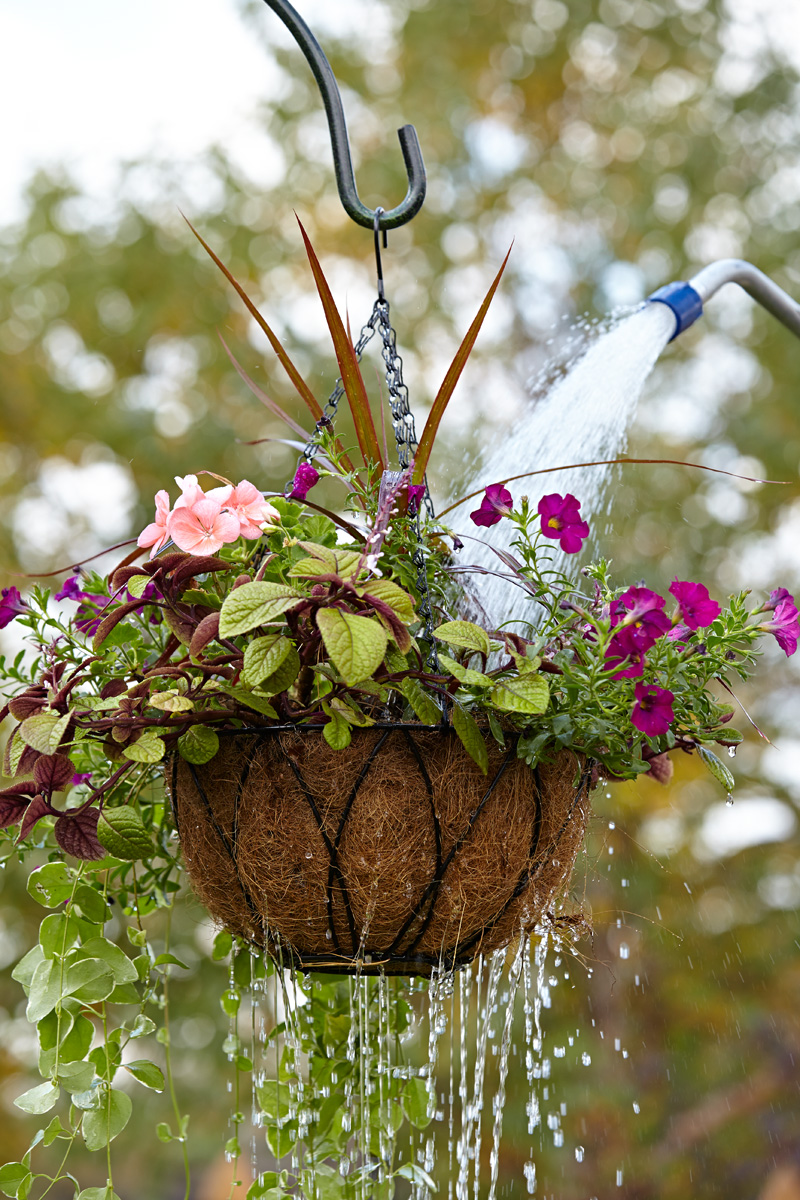Has this ever happened to you? You purchase a gorgeous hanging basket overflowing with colorful blooms in late May, only to find that come midsummer it’s looking a bit . . . droopy and sad, with far too many leaves and not enough flowers? There are many reasons why a hanging basket might not be performing as well as it did earlier in the season, as they have several needs that should be met on a consistent basis. Typically, hanging baskets are made up of annuals or tender perennials. In the confines of such small containers as hanging baskets, these plants are much more demanding than they would be in a larger container or in the ground. But never fear: as long as you provide them with the right amount of sunlight, water, fertilizer, and pruning in the form of deadheading and pinching, you have the greatest chance possible to keep your basket a blooming powerhouse until the first frost. But first, you have to start with the most ideal plant material possible.
Where is the best place to get a hanging basket?
Even though hanging baskets are certainly cheaper at the grocery store and big-box stores, your best bet is purchasing one at a plant nursery. Typically, the plants used in a hanging basket grown at a nursery have higher quality genetics and have been cared for much better than cheaper ones you would get elsewhere. The growers at nurseries can also observe their plants year to year and see what works and what doesn’t, constantly improving their offerings, while big-box stores will simply throw out whatever doesn’t sell and do the same thing the following season. Of course, you can always gather the plants and materials yourself and make your own hanging basket. Learn how here.
How much sun should you give your hanging baskets?
 Most hanging baskets have plants that should take full sun. Common annuals that are used to create full-sun hanging baskets include:
Most hanging baskets have plants that should take full sun. Common annuals that are used to create full-sun hanging baskets include:
- petunias (Petunia cvs., annual)
- geraniums (Pelargonium cvs., Zones 11–13)
- garden verbena (Verbena × hybrida cvs., Zones 9–12)
- lantana (Lantana spp. and cvs., Zones 9–11)
- and calibrachoa (Calibrachoa cvs., Zones 9–11)
However, some hanging baskets are designed for shade. Annuals that generally prefer some shade include:
- coleus (Plectranthus scutellarioides cvs., Zones 10–11)
- annual impatiens (Impatiens spp. and cvs., annual)
- tender begonias (Begonia spp. and cvs., Zones 9–11)
- and fuchsia (Fuchsia spp. and cvs., Zones 6–11)
Some plants, like lobelia (Lobelia erinus cvs., annual) and certain impatiens, can take sun or shade. Know the types of plants in your hanging baskets and whether they prefer sun or shade. Get more ideas for designing a hanging basket here.
Generally, the hotter your summers, the less sun your plants will be able to tolerate, and the cooler your summers, the more sun they can take. This means that if you live in a cooler region, your shade plants will likely be able to handle more sunlight. Alternatively, if you live in a very hot region, both your sun and shade plants will be more stressed and benefit from more shade and more irrigation. Know that afternoon sun is the most intense sunlight that plants receive throughout the day. If you need to protect your plants from the sun during the hottest parts of the summer, you can do this by siting them in an area that has more shade or providing a shade cloth (suspended above the plants and not touching the foliage) during the hottest parts of the summer.
How can you tell if your plants are getting too much shade or sun?
Your annuals will tell you if they are happy with their light conditions or not. If your plants are getting too much sun, the foliage might start to wilt or become faded, eventually turning brown and shriveled. The leaves might also show brown spots or streaks, which can indicate sunburn. If your annuals are getting too much shade, they might start to get leggy or bloom less than they should.
How often should you water your hanging basket?
Hanging baskets generally require more water than annuals planted in the ground or even annuals planted in larger containers, since they have a lot of roots in a very small container.
Watering tips:
- If your hanging basket is in full sun, it will likely need to be watered every day.
- If it’s in shade, you might only have to water it every two or three days.
- You don’t want to keep the soil constantly wet, as this will promote root rot and other forms of disease.
- Let your hanging baskets dry out before watering them again.
You can assess soil moisture simply by sticking your finger about an inch or two down into the soil or by using a soil moisture meter. If the soil is dry, it’s time to water again. If it’s still wet, you can wait until it dries out to water.
How often should you fertilize a hanging basket, and what kind of fertilizer should you use?
 Fertilizer is your best friend in keeping your annuals blooming consistently all summer long, but there can be too much of a good thing. Generally, there are two types of fertilizers you can feed to annual plants: granular, slow-release fertilizers, and water-soluble liquid fertilizers. We tested common fertilizers here.
Fertilizer is your best friend in keeping your annuals blooming consistently all summer long, but there can be too much of a good thing. Generally, there are two types of fertilizers you can feed to annual plants: granular, slow-release fertilizers, and water-soluble liquid fertilizers. We tested common fertilizers here.
Here’s what is important to know about fertilizers:
- Most experts will recommend liquid fertilizers, as plants take it up more quickly and it will show more immediate results. These fertilizers also have a more uniform application and are less likely to attract pests that might be attracted to granular fertilizer.
- If you use a liquid fertilizer to feed your hanging baskets, be sure to follow the instructions on the packaging and apply it around every 7 to 10 days for a hanging basket in full sun, or every 14 days for one in shade. Any more often can burn the roots.
- An all-purpose fertilizer with an equal balance of phosphorus, potassium, and nitrogen (you may see “20-20-20” on the front of the container) will be a good fit for your annuals.
How and why should you deadhead or trim back your plants?
You want to keep the annuals in your containers flowering all summer long and into fall, and the best way to do that is deadheading.
Many annuals are bred these days to require no deadheading, like many cultivars of petunias and calibrachoas. But certain annuals are notorious for needing frequent deadheading, such as geraniums and verbena. Removing spent blossoms prevents these plants from attempting to set seeds and directs energy back into flower production.
How to deadhead
Simply cut the spent flowers and stem above the first set of healthy leaves. You can also pinch your plants, a process in which you remove the tip of a plant’s stem in order to encourage more lateral growth. This will create a bushier, fuller plant and potentially extend your plant’s bloom time. Learn more about how to deadhead your plants here.
If your plants are still looking tired and leggy despite deadheading and pinching, don’t be afraid to give them a drastic haircut. It may take them a few weeks to bounce back, but as long as you continue to provide enough fertilizer, sunlight, and water, you will get a renewed plant with dense foliage and fresh flowers.
Enjoy your hanging basket for the entire growing season
We all love our trees, shrubs, and perennial beds and borders, but there’s nothing quite like the cheery, colorful blooms of a cascading hanging basket greeting us from a front porch or the side of a patio. Follow these tips consistently to keep your hanging basket full of dense, healthy growth and long-blooming flowers all summer long.
Diana Koehm is the assistant editor.


